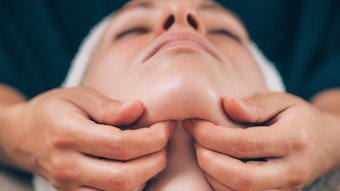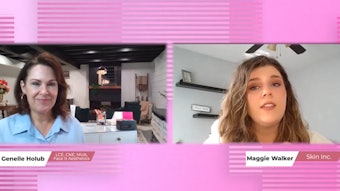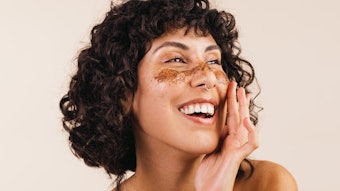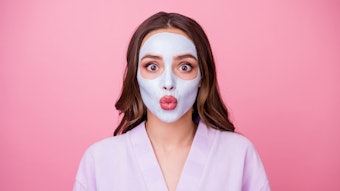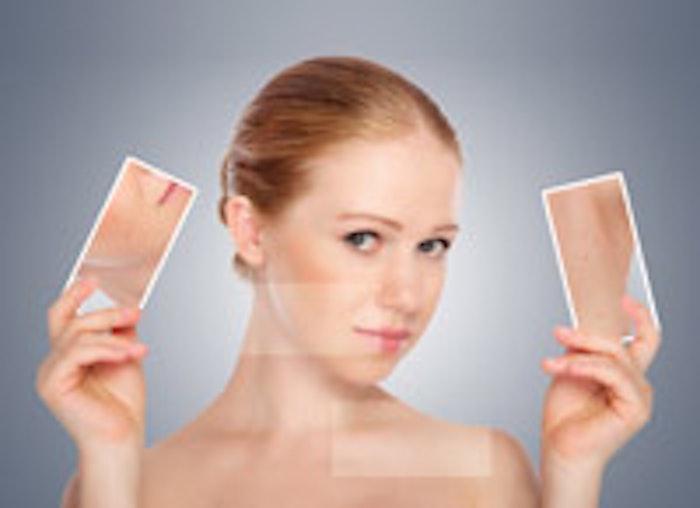
Hormones are chemical messengers that regulate almost every aspect of the human body, including the maturation of the oil glands in the skin. It is when these oil glands mature that they develop the capability of becoming acne lesions. However, not everyone experiences acne—hormones are not the root cause of acne, only part of what can exacerbate it. Acne is actually caused by the inherited propensity of retention hyperkeratosis—dead skin cells that stick together at an accelerated rate along with other debris. This forms an impaction inside the follicle called the microcomedone, the beginning of all acne. If a person is acne-prone already, hormonal fluctuations just fuel the fire by producing more sebum that flows into an already-blocked pore. Sebum can be quite irritating to the follicle wall, sometimes producing inflammation inside the pore.
Causes of hormonal fluctuations include:
- Puberty;
- Stress;
- Menstrual cycles;
- Certain birth control pills and methods;
- Pregnancy;
- Peri- and post-menopausal hormonal fluctuations;
- Eating certain high-androgen foods, such as peanuts, corn and canola oil, shrimp and organ meats;
- Medical conditions, such as polycystic ovary syndrome (PCOS) and rosacea fulmins;
- Certain medications, such as thyroid medications; and
- The time of year.
With so many hormonal fluctuations coming at clients from all corners, how do acne-prone individuals ever achieve clear skin? The correct use of exfoliating and antibacterial products will prevent microcomedones from forming in the first place. Mandelic, glycolic and/or salicylic serums—depending on the type of acne—used in combination with benzoyl peroxide (BPO) gel will get the job done. Following are case studies of acne-prone clients with extreme hormonal fluctuations that affected the severity of acne. Included are step-by-step treatments and home-care regimens for each of these clients.
Case Study: No. 1—Client with PCOS
PCOS is characterized by polycystic ovaries—featuring cysts that develop in the ovaries, as well as irregular or no menstrual periods, irregular ovulation and high levels of androgens in the body, which exacerbate acne. Because of the constant influx of androgens, this client was informed that her skin may not get completely clear, but it could improve. It was recommended that she take zinc monomethionine to help bring down her inflammation levels.
Before
Treatment: weeks 1–2.
Mild 5% TCA/lactic peel—two layers
Home care regimen.
Morning: Cleansing gel; moisturizing toner (she was allergic to aspirin, so no salicylic toner); 8% mandelic serum every other day; sunscreen
Evening: Cleansing gel; 5% BPO gel starting at 15 minutes, and then washed off—gradually increased wearing time to overnight after two weeks; cleansing gel; noncomedogenic moisturizer
Treatment: weeks 3–4.
At this point, the skin was still inflamed and hadn’t changed much. The treatment was a mild 5% TCA/lactic peel—two layers.
Home care regimen.
Morning: Cleansing gel; moisturizing toner; 8% mandelic serum every day; sunscreen
Evening: Cleansing gel; moisturizing toner; 5% BPO gel, now worn overnight
Treatment: weeks 5–6.
The skin was still inflamed and hadn’t changed much. The treatment was a mild 5% TCA/lactic peel—two layers.
Home care regimen.
Morning: Cleansing gel; moisturizing toner; 8% mandelic serum; 5% BPO gel to spot-treat cysts; sunscreen
Evening: Cleansing gel; moisturizing toner; 8% mandelic serum; 5% BPO gel
Treatment: weeks 7–8.
The skin was still inflamed and hadn’t changed much. I provided a hand-held LED device for the client to use on the skin each night after cleansing—three minutes on each area right on the skin—to assist in bringing down the inflammation. The treatment was a mild 5% TCA/mandelic/lactic peel—two layers.
Home care regimen.
Morning: Same as last week.
Evening: Cleansing gel; LED therapy; moisturizing toner; 8% mandelic serum; 5% BPO gel; 5% BPO gel with 3% sulfur to spot-treat cysts
Treatment: weeks 9–10.
The skin was still inflamed and getting dehydrated from the strong home-care regimen. The client’s physician put her on estradiol for one month. Her treatment was an enzyme and steam, because of skin dehydration.
Home care regimen.
Morning and evening: Same as last week.
Treatment: weeks 11–12.
The skin was extremely dehydrated and broken out. I told the client that I might not be able to do much more for her, and that she would need more medical hormonal intervention. She wanted to keep using the products. A water-based hyaluronic hydrator was added to help alleviate the dehydration, but not affect the efficacy of the BPO. Her treatment was an enzyme and steam.
Home care regimen.
Morning: Cleansing gel; moisturizing toner; 8% mandelic serum; water-based hyaluronic hydrator; 5% BPO gel to spot-treat cysts; sunscreen
Evening: Cleansing gel; LED therapy; moisturizing toner; 8% mandelic serum; water-based hyaluronic hydrator; 5% BPO gel; 5% BPO gel with 3% sulfur to spot-treat cysts
Treatment: weeks 13–14.
Miracle! The skin wasn’t dry and was 80% clear; it had finally turned the corner. The BPO gel was increased to 10% for the client’s evening regimen to ensure that the inflammation was kept under control.
After
Case study: No. 2—Teenage client with hormonal symptoms
This client was a 16-year-old with severe inflamed acne, but it seemed more severe than just regular inflamed acne. Her menstrual cycle had been very irregular. She had been on strong antibiotics and, when she stopped them, her acne got much worse. Her dermatologist suspected she may have suffered from gram-negative folliculitis, which is a more severe form of acne lesions. This can occur when a person has been on antibiotics for a long time.
Before
Treatment: weeks 1–2.
Mild 5% trichloroacetic acid (TCA)/mandelic/lactic peel—two layers
Home care regimen.
Morning: 2.5% BPO wash; salicylic toner; 5% mandelic serum every other day; sunscreen
Evening: BPO wash; 10% BPO gel starting at 15 minutes, and then washed off—gradually increased wearing time to overnight after two weeks; BPO wash; salicylic toner; noncomedogenic moisturizer
Treatment: weeks 3–4.
None; she was a long-distance client who came in once a month instead of every two weeks.
Home care regimen.
Morning: 2.5% BPO wash; salicylic toner; 5% mandelic serum every day; sunscreen
Evening: BPO wash; salicylic toner; 10% BPO gel worn all night; 5% BPO with 3% sulfur spot treatment for inflamed lesions
Treatment: weeks 5–6.
By this point, the client’s inflammation is markedly decreased. The treatment was a mild 5% TCA/mandelic/lactic peel—two layers.
Home care regimen.
Morning: 2.5% BPO wash; salicylic toner; 5% mandelic serum every day; sunscreen
Evening: BPO wash; salicylic toner; 5% mandelic serum; 10% BPO gel worn all night; 5% BPO with 3% sulfur spot treatment for inflamed lesions.
Ongoing care.
Once the client’s inflammation was under control, she did not spot treat with the 5% BPO gel with sulfur. Her home-care regimen was adjusted to include a stronger mandelic serum as her skin adapted to the weaker strength. Because she was not inflamed anymore, she used a 5% BPO gel for her night regimen, and she stayed relatively clear for the next five years.
This recent picture from the client (See Case Study No. 2.) showed an influx of facial hair and chin acne. A bigger swing of hormonal imbalance was suspected, and she was advised to get a hormone panel from her physician.
Her testosterone levels were normal, but her didehydroepiandrosterone (DHEA) sulfate levels were high. Her doctor explained that DHEA is a precursor to testosterone, which explained the continuous acne and facial hair without any other symptoms of increased testosterone. Her doctor recommended going on spironolactone, which helps to block androgen receptors. It prevents cells from absorbing androgen hormones and limits hormonal fluctuations that can contribute to acne breakouts. At last report, she was still contemplating taking the spironolactone.
After
No. 3—Male marijuana-smoker
Smoking marijuana is known to raise and then lower testosterone levels. Skin often reacts to unnatural hormonal fluctuations. This client had been smoking marijuana for years and happened to find out that his testosterone levels were very low and was going to a naturopath for treatment. A pattern of acne is often seen in the chin/jaw area of older women with hormonal acne, and the lowered testosterone levels explain this pattern on this male client.
Before
Treatment: weeks 1–2.
Mild 5% TCA/lactic peel—two layers.
Home care regimen.
Morning: BPO wash; salicylic toner; salicylic serum every other day (his skin was too sensitive for mandelic acid serum); sunscreen
Evening: BPO wash; 5% BPO gel starting at 15 minutes, and then washed off—gradually increased wearing time to overnight after two weeks; BPO wash; salicylic toner; noncomedogenic moisturizer
Treatment: weeks 2–3.
The skin was already getting clearer. The treatment was a mild 5% TCA/lactic peel—two layers.
Home care regimen.
Morning: BPO wash; salicylic toner; salicylic serum every day; sunscreen
Evening: BPO wash; salicylic toner; 5% BPO gel worn overnight
Treatment: weeks 4–5.
The skin was 90% clear; it responded quickly. The treatment was a mild 5% TCA/lactic peel—two layers.
Home care regimen.
Morning: Same as last week.
Evening: BPO wash; salicylic toner; salicylic serum; 5% BPO gel
After
The right treatments
Although hormonal fluctuations can wreak havoc on acne-prone individuals, the right treatments and home care regimens can successfully help clients achieve clear skin.
Laura Cooksey is an acne expert, educator, speaker and owner of Face Reality Acne Clinic in the San Francisco Bay Area. She has more than 20 years of experience and works with skin care professionals throughout the country to create successful practices with her comprehensive training DVD Proven Strategies for Treating Acne.

